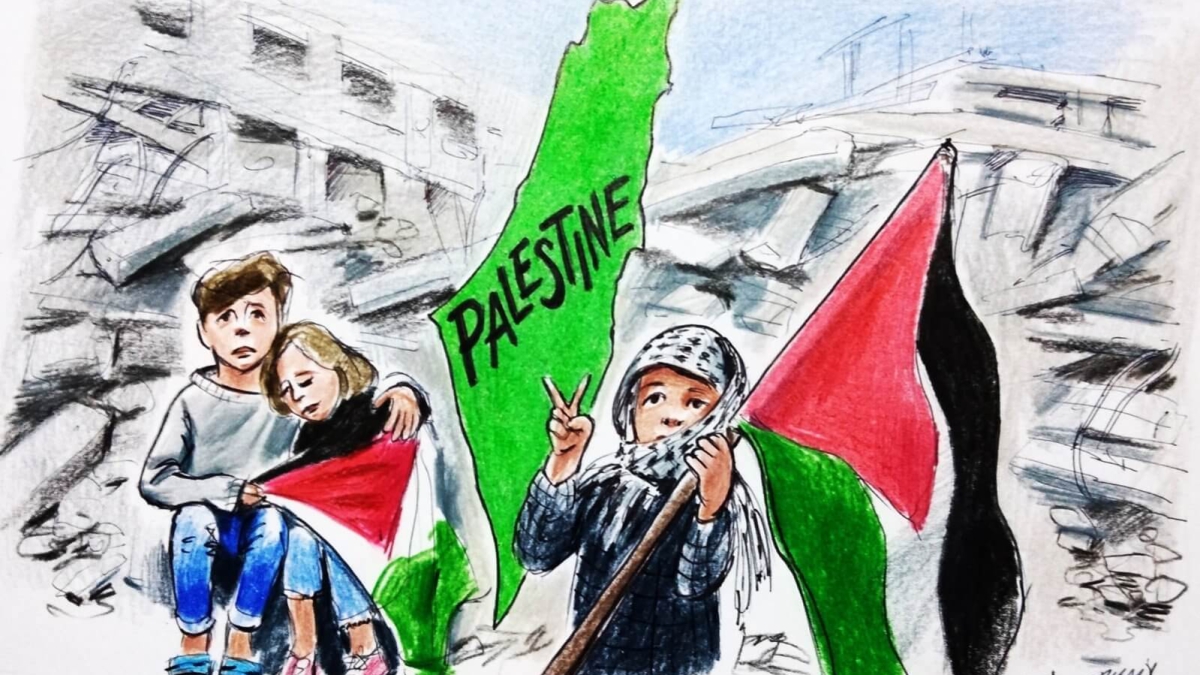Two-State Solution as Pretext to Colonize

The concept of a two-state solution serves as a strategic tool employed by numerous states, both proponents and opponents of the Palestinian cause. States advocating for a fair resolution in favor of Palestine often reiterate this proposal as a diplomatic means to address Israel's brutality.
Conversely, nations like the United States, providing unconditional support to Israel's actions from occupation to "mowing the lawn," a term used by the Israeli Defense Forces (IDF) to describe periodic military operations conducted in the Gaza Strip, endorse the two-state solution to project an image of actively pursuing a just resolution while simultaneously affording Israel additional time for its occupation.
In this context, the two-state solution involves Israel retreating to its borders predating 1967 and relinquishing control of Gaza, the West Bank and East Jerusalem to Palestine. Such acknowledgment would grant Palestine recognition as a state with well-defined borders within the U.N. framework, facilitating the coexistence of two neighboring states.
Promised lands
The fact that the feasibility of a two-state solution is currently and will be impossible in the future is widely acknowledged. The impracticality of this solution is, in essence, a well-known but unspoken truth. As President Recep Tayyip Erdoğan emphasized in his historic U.N. address, Israel is a state with undefined borders, adamantly avoiding any discussions about its territorial limits. Ultimately, the desired borders of Israel encompass the so-called "promised lands."
While Zionist leaders advocate for this not out of genuine religious conviction but rather weaponizing it for their interests, the fundamental situation remains unaltered. It is worth underscoring, though perhaps unnecessarily, that the "promised lands" extend beyond Lebanon or Syria to include the territory of Türkiye.
West Bank
We can see the clearest example of Israel not believing in a two-state solution in the West Bank as Israel actually controls the West Bank, which is partly governed by the Palestinian group Fatah – a group that originates from the Palestine Liberation Organization (PLO).
The West Bank is a giant ghetto surrounded by 49 Israeli checkpoints. Only 18% of West Bank territory remained under Fatah's control. The remaining places are under the control of both Israeli occupation forces and are being occupied step by step by illegal Zionist settlers. Currently, 700,000 illegal settlers live in the West Bank.
There is no Hamas in the West Bank, but the occupation continues. There is no Hamas, but Israel controls the borders. There is no Hamas, but there are hundreds of political prisoners, including children. There is no Hamas, but there is torture. There is no Hamas, but there is no security of life nor property.
This is Israel. This is why Israeli Prime Minister Benjamin Netanyahu's party, Likud, mentions "Jewish sovereignty from the river to the sea" in its charter. Therefore, the only solution is a one-state solution in which the Palestinian people will live in peace, regardless of religion, language or race. I do not know when it will happen, but I know it is the only realistic solution.
Hilal Kaplan is a journalist and columnist. She is also board member of TRT, the national public broadcaster of Turkey.
( Source: Daily Sabah )
Topics: Gaza, Israel Violence, Israeli-Palestinian Conflict, Palestine
Related Suggestions

















